|
Usually you have an ‘oh wow’ destination in mind on your travels – a big mountain, amazing cavern, desert ruins, sculpted landscape. But a key part of the story is the incidental stuff along the way – the food, people, and storefronts – all the flavorful details. 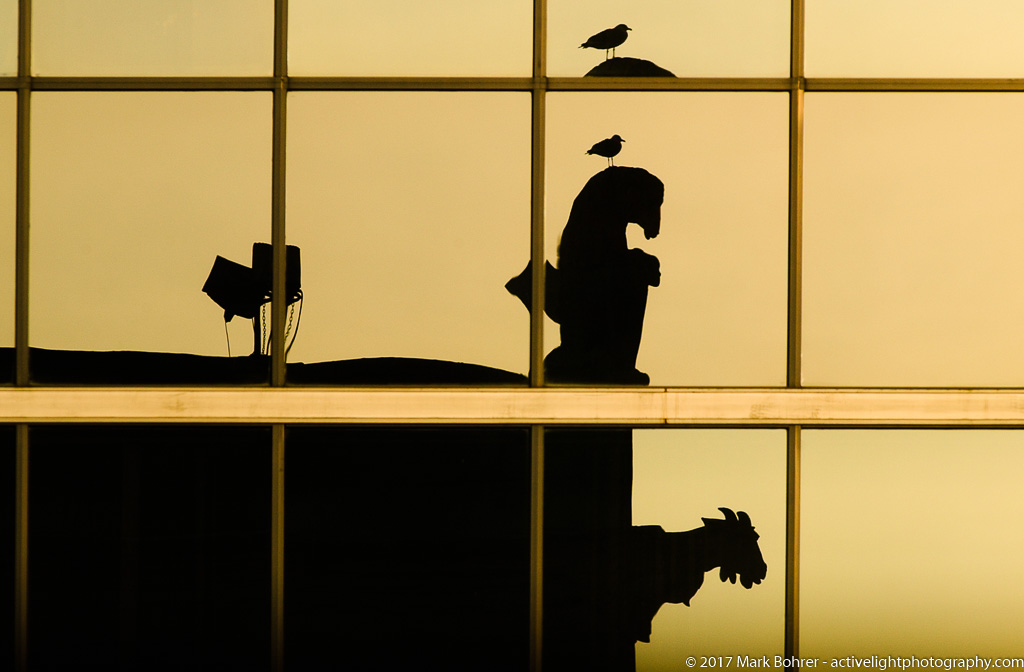 Reflected gargoyles, Hotel Vancouver, B.C. I could write, “Be sure to capture those,” and be done with it, making this a very short post. But there are a few ideas that guide me. 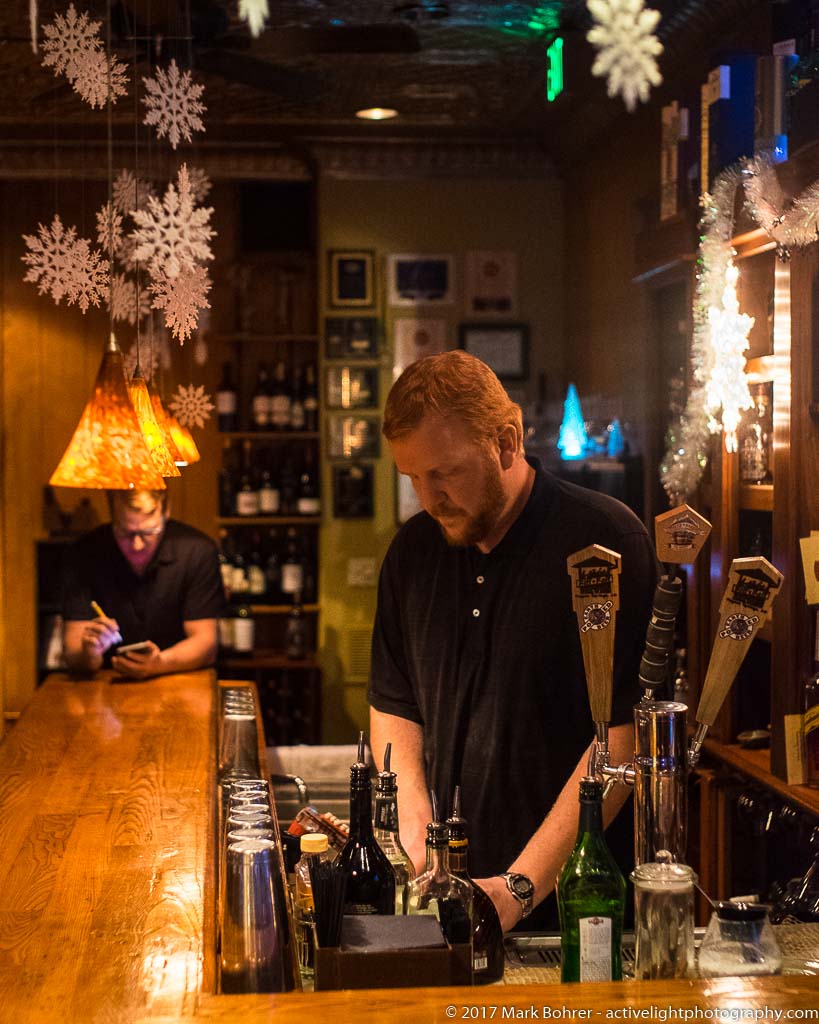 Alley House Grille, Pagosa Springs, Colorado What Adds to the Story? Brewpubs and restaurants are a gotta-see when you travel. Food is a big part of any travel story, and draws people like a magnet – viewers and subjects. Liquor bottles on shelves and long wooden bars attract me too. I also look for bartenders mixing drinks and talking with patrons, and get unposed shots while they’re immersed in conversation. 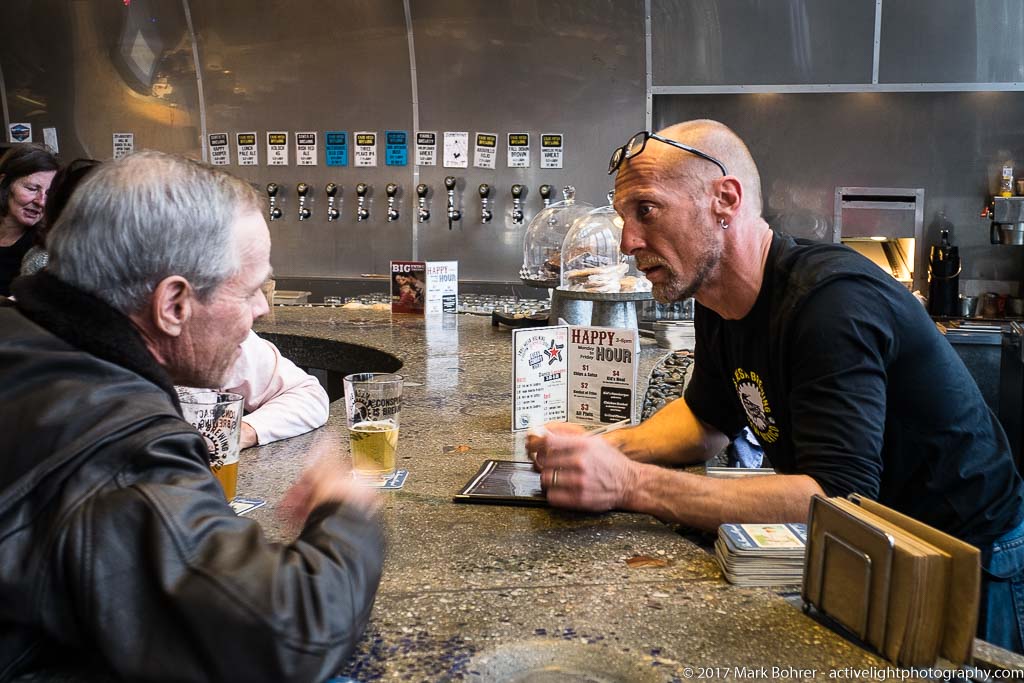 Taos Mesa Brewing, Taos, New Mexico I make a point of shooting the food we’re served. This is usually with a 25mm M-mount lens on a mirrorless camera, for a 37.5mm full-frame field of view. I set the lens near its minimum focus – 1 1/2 feet – and widest lens opening, f/2.8. That still gives me enough depth of field to capture my dish and maybe a beverage, while blurring the background. Then I set the camera to ISO 6400, to allow me to handhold shots while still giving usable noise quality. Many restaurants supply overhead lighting for each table. This makes it easy to highlight the food, while the background goes dark. If I’m really lucky, there will be an offset to the light (it won’t be directly overhead), and I’ll get some additional directional shadows for depth. I’ve also experiemented with multiple flash units for table lighting, each with a remote radio trigger. This is usually more trouble than it’s worth. I’d rather shoot quickly, then eat my dinner before it gets cold. 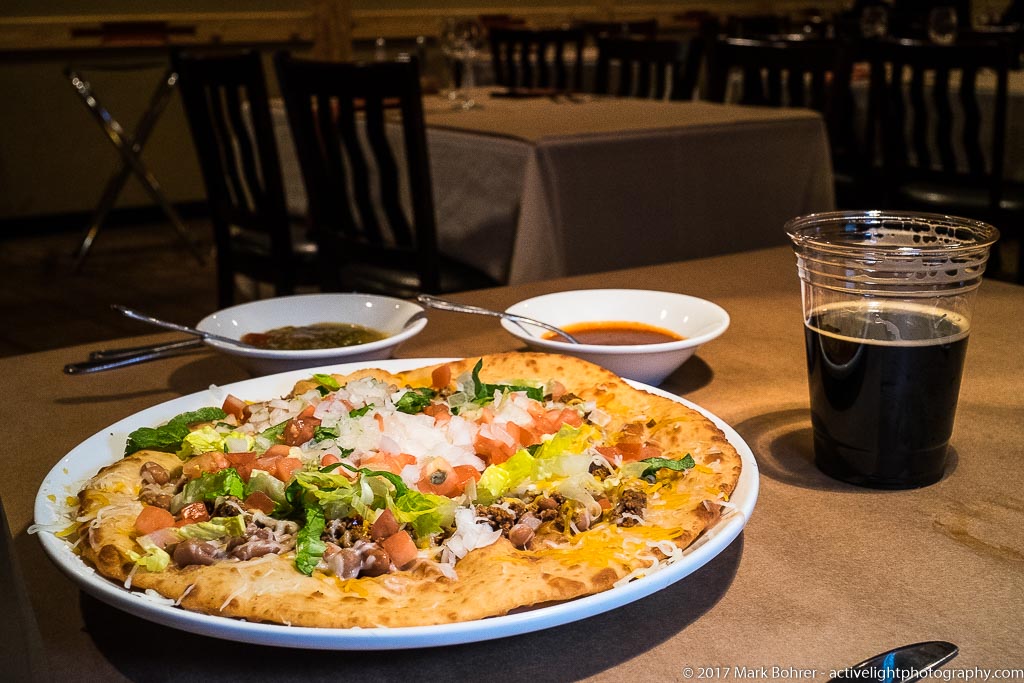 Tiwa Taco, Pueblo Harvest Cafe, Albuquerque Zeiss Biogon T* 25mm f/2.8 ZM Sometimes I’ll try the camera’s little built-in flash for fill. This may require lowering ISO until you get down to the camera’s flash sync speed. Usually flash is too bright, even power-reduced at the camera, but I’ve made it work with beer glasses. In any case, I never depend on flash. It gives me an extra choice for the look of a shot, that’s all. 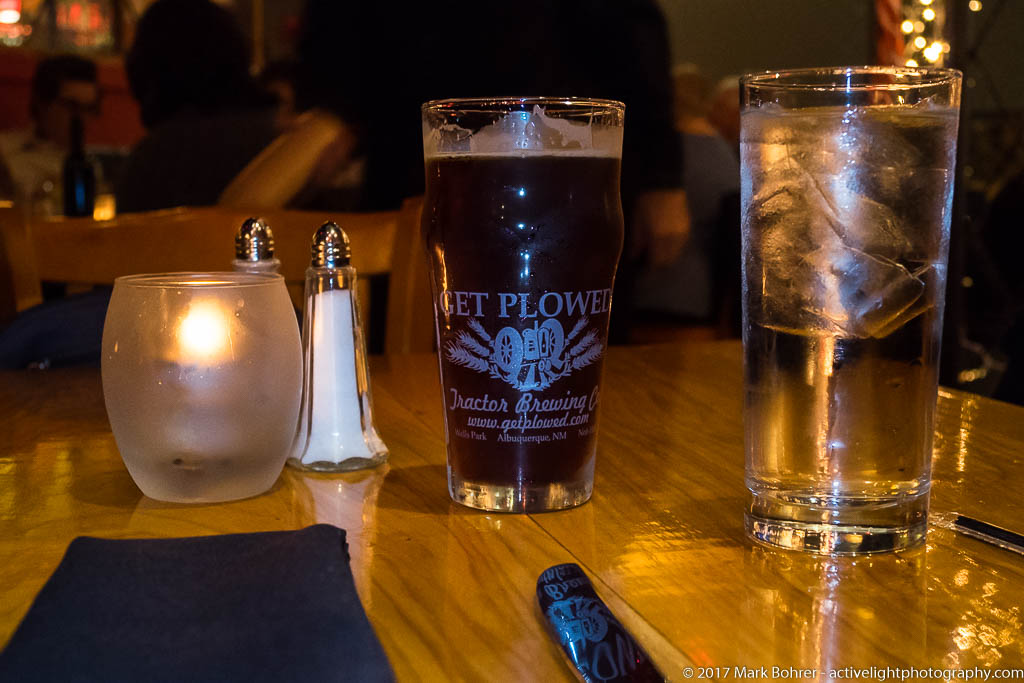 Get Plowed! – flash-filled at M’Tucci’s Kitchina, Albuquerque Zeiss Biogon T* 25mm f/2.8 ZM Shooting food at table is also one time I may actually use a cell phone camera. My iPhone 6 has a very close minimum focusing distance, and its small size makes it easy to use in tight quarters. Its flash is just awful, so I never use that. And I’ll never depend solely on a cell phone camera for food pictures. It just gives me another creative choice. It begins with the Setup When you go to a party or wedding reception, everything is beautifully placed and ready. But it doesn’t get that way by itself. The musicians setting up and food prep can be almost as photographically interesting as the actual event. 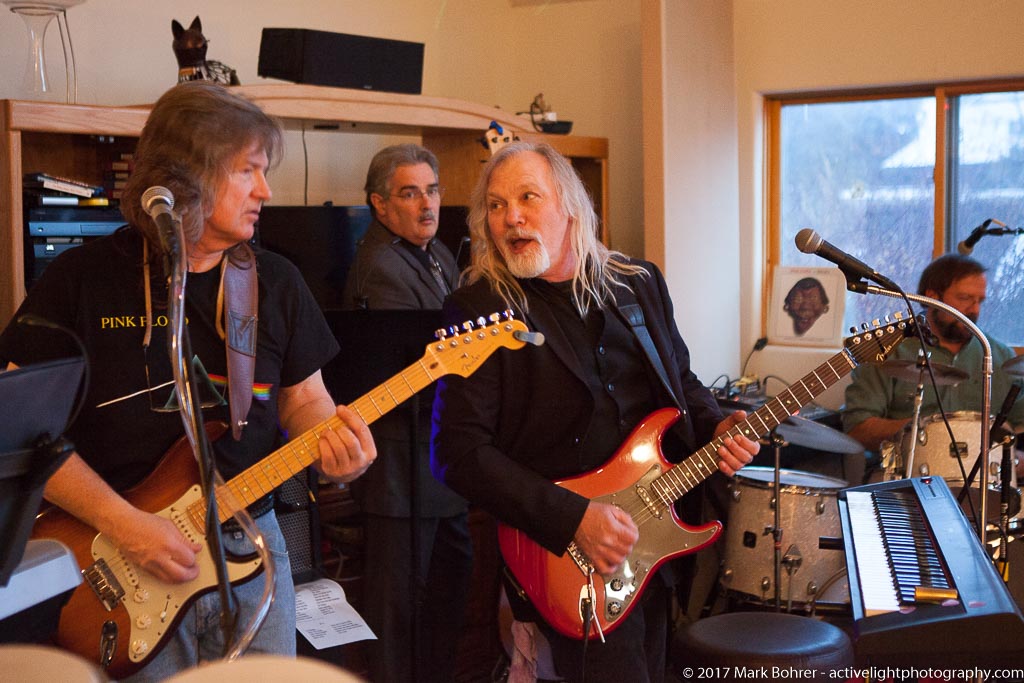 Sound check – The Wall Amps were plugged in, and effects pedalboards hooked up. You heard the sound of ‘check, check’ and some feedback as EQ was adjusted on the sound system. Everyone smiled as the full band played Pink Floyd’s The Wall for a sound check. Early guests and the host prepared or simply placed food on on its table. Just the bright colors of fruit were enticing, and there was enough back- and front-lighting from windows to light the food well. Specular reflections, those bright spots you see on moist areas, made it look fresh. I shot it before things started, a good idea as it turned out. 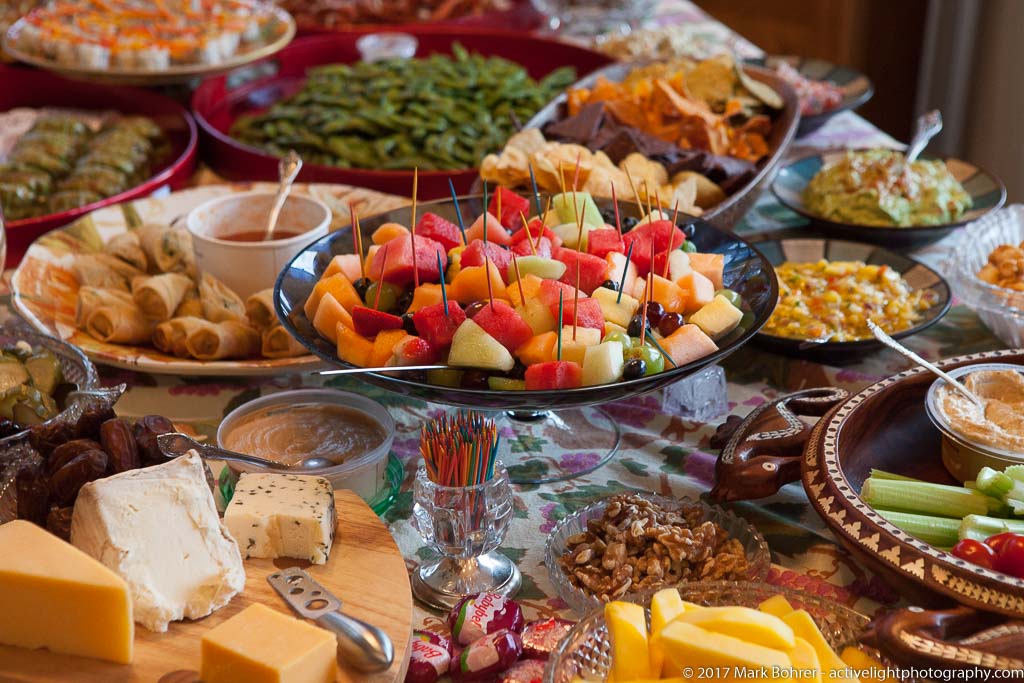 Great party food I walked outside to talk to the guest of honor, and captured him lighting a firepit. I also shot the balcony view of the nearby valley and snowy mountains, something I’d always enjoyed on previous visits. 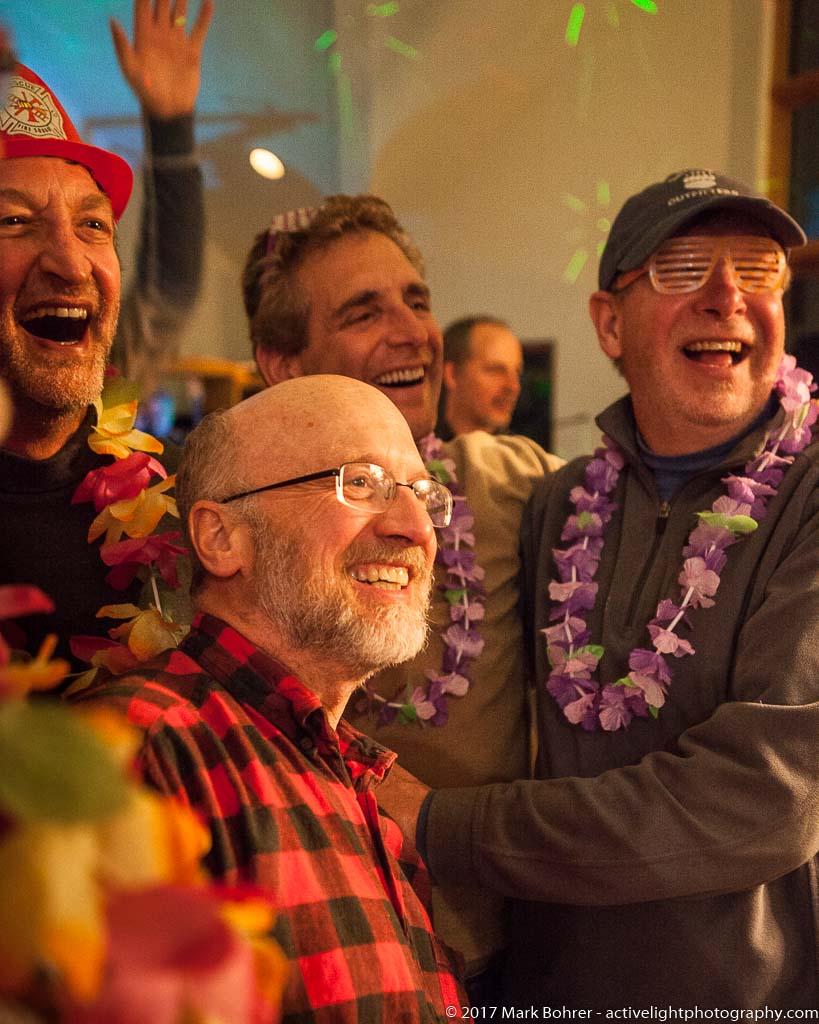 The group As the party kicked in, there were plenty of dancers and shouted conversations to capture. Like most public gatherings, people expect to be photographed, so they were very comfortable with it. The food disappeared so quickly that by the time I got back over to it, it was mostly gone. As ending shots, I got two views of a group, posing first for someone else, then for me. Again, it’s all about giving yourself choices later. 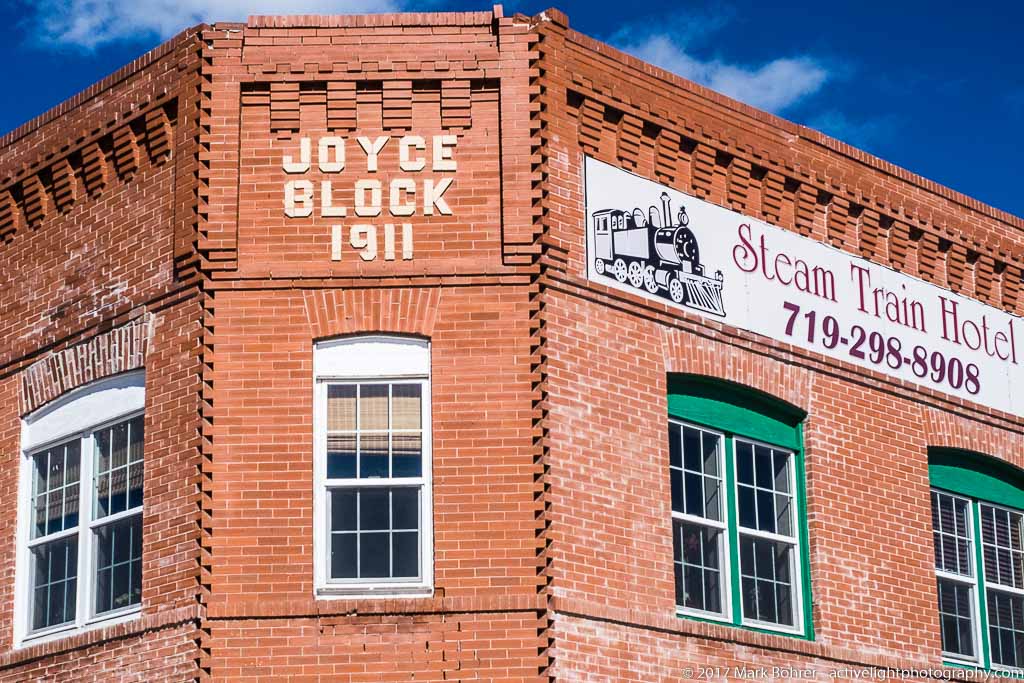 Joyce Block, 1911, Antonito, Colorado Tasty Storefronts In town, I always check out old storefronts and historic buildings. Many of these date from the early 1900s in the American West. They supply a unique sense of place. If we’re on our way to somewhere else, these can be a grab from the car stopped at traffic lights. Sometimes they’re from walking around iconic towns like Durango, Colorado. I always shoot these as loose as I can. I don’t always have a tilt-shift lens with me to correct perspective of tilted buildings, and when I use Lightroom to do it, I’m going to lose some of the picture. I may not correct tilting lines perfectly either, depending on what I have in the picture. 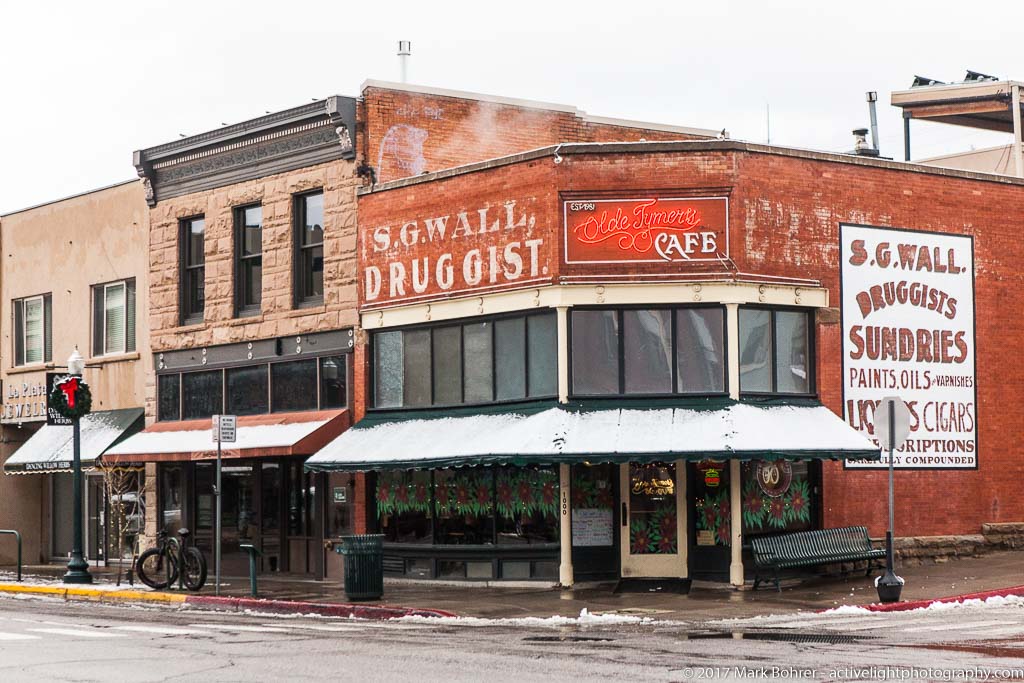 S.G. Wall Druggist, Durango, Colorado If you don’t remember to shoot loose, you can usually crop to the most important part suggesting the whole building. When you focus on an important feature like fancy brickwork or gargoyles, perspective correction may be less important to your story. All of these can serve as establishing shots to the main destination. If you shoot all parts of the story, you’ll be covered if you discover the main destination wasn’t really the best focus. You may find that focus in one of those other shots. |
(408) 483-3782
Curious about how to shoot ruins?(408) 483-3782

Recent Comments